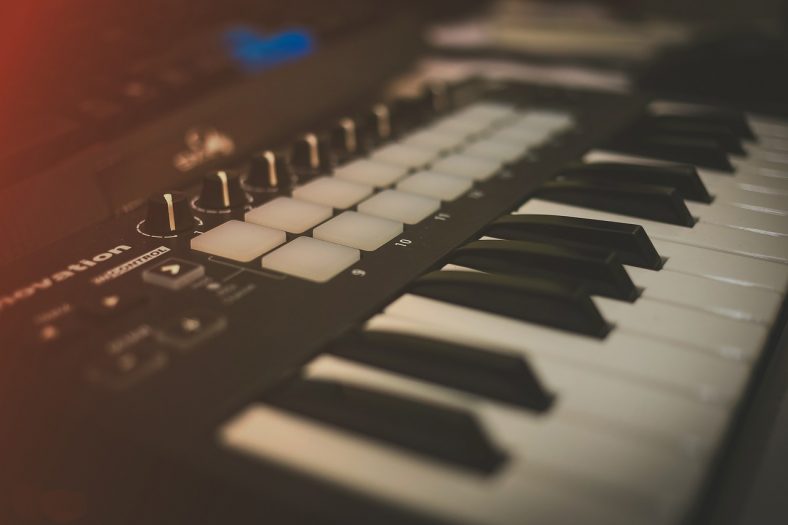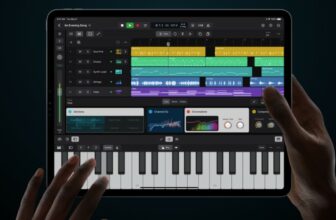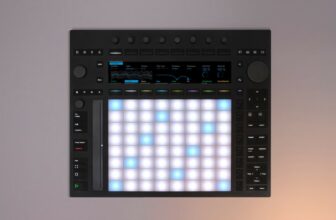What is MIDI 2.0 And What Impact Will It Have?

2020 was a-buzz, with the MIDI 2.0 hype after the NAMM ’20 confirmation regarding the 2.0 update, but what is this technology and how will it impact music gear?
When MIDI 1.0 hit the scene in 1983, no one would have expected how much it would impact music-making throughout the world.
The who’s who of the industry came together in the 80s to create MIDI 1.0, and their cooperation spearheaded a new technology that was universally accessible without boundaries and beyond petty rivalry.
This remarkable technology was integrated without any format wars, and today you can see it work its magic in billions of smart devices (even your cellphone) in every corner of the globe.
Multiple units of research and technical specifications have labored for over a decade under the umbrella of AMEI and MMA (MIDI Manufacturers Association) to herald MIDI 2.0 as a new frontier for musical expression and higher resolution. If you want to really get into the details check out this press release from MIDI about the announcement, but it’s not light reading!
In this article, I will try to simplify and break down what MIDI 2.0 is and how it will impact the current and future music scenario.
Contents
MIDI 2.0 – At a Glance
- MIDI 2.0 is bidirectional, backward compatible, and supports and enhances 1.0 with new features.
- MIDI 2.0 delivers a much higher resolution to the fold and due to the automated communication between devices, the end result is better control parameters and an overall smooth/less-buggy function.
- MIDI 2.0 is compatible with 1.0. However, it is not meant to replace the 1.0 version, but instead enhance it with new features.
- The future for MIDI 2.0 is bright as manufacturers like Roland have already released MIDI 2.0-ready keyboards.
MIDI 1.0 vs. MIDI 2.0 Simplified
MIDI plays a vital role in interpreting ‘the human factor’ of performance as it takes the data from your device and translates it for computers to understand and express. The MIDI 1.0, though exemplary, only allows one-directional communication – from transmitter to receiver. So you can think of it as a monolog.
The new MIDI 2.0 update states that the new version is bi-directional and your devices can now have a dialog.
What is MIDI 2.0? What are the new features?
According to MIDI, the “three Bs” summarize the key features of MIDI 2.0:
- Bidirectional
- Backward Compatible
- Both (enhancing both 1.0 & 2.0 with new features)
All MIDI 2 devices auto-configure and can work in tandem while communicating with each other by themselves. Here are some outstanding features that you can look forward to:
Auto Mapping or Profile Configuration: The new MIDI gear can now communicate with a device to understand what role it is playing and adapt its configuration to suit the device. If you pair it with a lighting controller, for example, it will auto-map to dimmers. This will drastically reduce the setup time required and the painstaking manual programming.
This auto-mapping feature means endless possibilities at your fingertips. For instance – if your controller detects the profile of a device with a ‘mixer’, it will automatically map the controls with pots, slides/faders, or other options that represent mixer parameters. Similarly, if instead of a mixer, the device spots a ‘drawbar organ’ – the control surface will intelligently reconfigure (map) the controls to virtual organ drawbars and other organ-related parameters. Furthermore, these parameters can be modified and saved for instant recall.
Property Exchange & Recall-ability
Many of you who have used hardware synths know how hard it can be to bring hardware to the same level of recall ability as the VST versions. However, the new Property Exchange feature of MIDI 2.0 can cause one MIDI 2.0 device to communicate with another device to retrieve and configure the whole gamut of presets from names to functionality to individual parameter settings.
This detailed information sharing will set up the entire device, a hardware synth in this case, and bring it up to the same level of readability as a software synth. Other significant features, like the Note-On Options, will deliver more choices for precise articulation control and note pitch.
MIDI 2.0 – Higher Resolution and Augmented Expression
When MIDI 1.0 was released, we were still in the era of kilobytes and 32-bit processors that tapped out at 8 Mhz. The technology and data streams of the 80s and 90s were incapable of meeting the demands of resolution and expressive control for a protocol like MIDI Polyphonic Expression (MPE) was unthinkable.
As far as resolution goes, MIDI 2 makes a drastic leap from a 7-bit resolution (128 steps) to a 32-bit resolution. Now LinnStrument and Roli Keyboards had already employed the magic of MPEs to allow musicians to wiggle, slide, bend, glide, and do all sorts of polyphonic strokes with individual pads. The MPE brings MIDI back on the table with the ability to project previously unimaginable permutations of velocity and aftertouch.
For those of us who have lamented the lack of realism in note controllers when trying to digitally reproduce the sound of a violin using a VST and a controller. They just couldn’t replicate the angling of the violin bow and how it impacted the sound.
The new per-note controllers do just that. They can define how each note will respond (like an MPE) but they can do it on a single channel, in 32-bit resolution with a closer-to-analog feel while being a lot easier to modify or edit in any DAW. This means we can now imagine a controller being able to articulate nuanced changes in notes – like the different angles at which you can hold a plectrum as you strike the string of a guitar.
Is MIDI 2.0 compatible with Midi 1.0?
According to the announcement, MIDI 2 is completely backward compatible and will work perfectly well with MIDI 1.0. As mentioned earlier, all MIDI 2 devices auto-configure by relaying information and exchanging data on functionality. They have categorically stated that MIDI 2.0 is not designed to replace MIDI 1.0 but to expand the features that customers and followers have been demanding for the past decade. Additionally, they plan to continue the production of MIDI 1.0 devices and will do so unless some feature is released where they become obsolete.
Thanks to the MIDI Capability Inquiry (MIDI-CI), devices use a bi-directional link to check if both devices support the new features. MIDI-CI checks for a) Profile Configuration, b) Property Exchange, and c) Protocol Negotiation to confirm the capabilities of connected devices.
In simple words, the 2.0 communicates with existing gear to check if it is MIDI 2 compatible and will automatically revert to 1.0 instantaneously if that is not the case.
MIDI 2.0 and the Future
MIDI 1.0 has been around since the 80s and such an update was long overdue. However, the futuristic thinking and new features have created a ripple among musicians, producers, DJs, and performance artists. The ten-year development seems to have paid off and the implications of MIDI 2.0 hold the promise of defining the future.
It comes as no surprise that Roland, one of the co-founders of the technology, has launched the first-of-its-kind A-88MKII MIDI 2.0-ready keyboard. You can read more about it on the Roland website.
Conclusion
MIDI 1.0 was first introduced in the 80s and had a major impact on the music industry and music gear, in general. With the coming of MIDI 2.0, you can expect an even more noticeable footprint as the new features and automation factor will take this technology to new heights and likely make it a standard from here on out.





